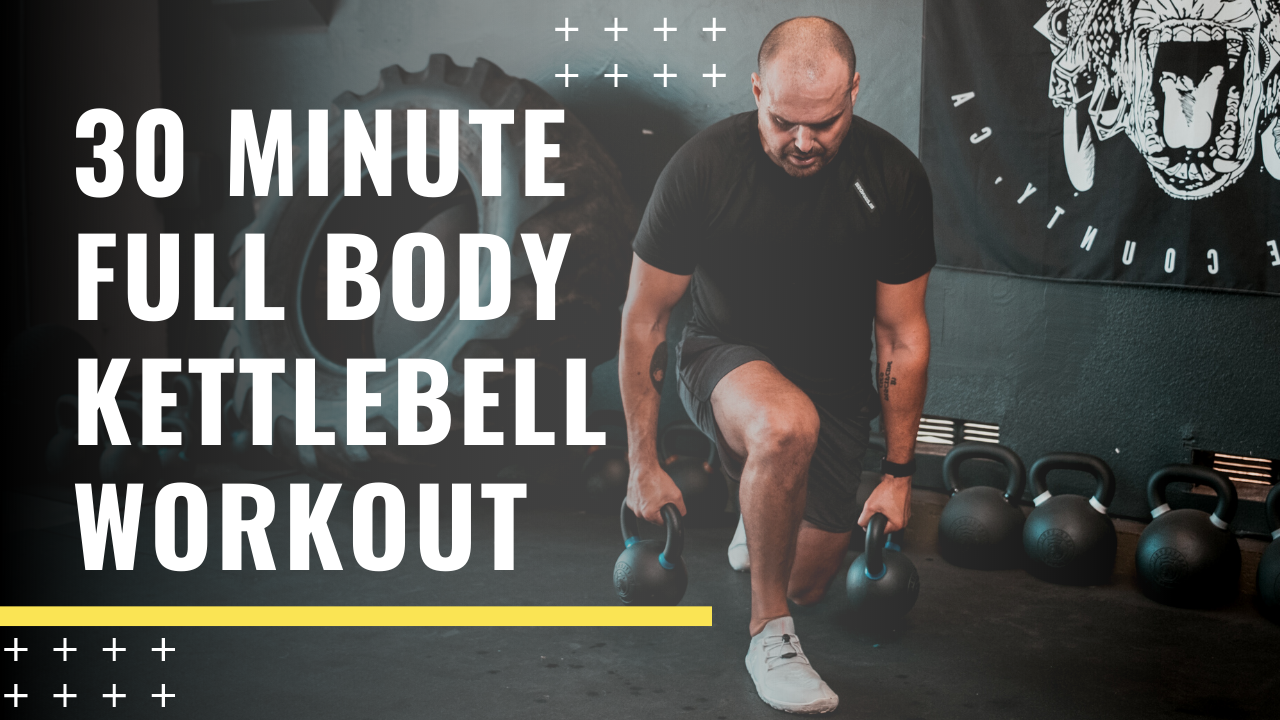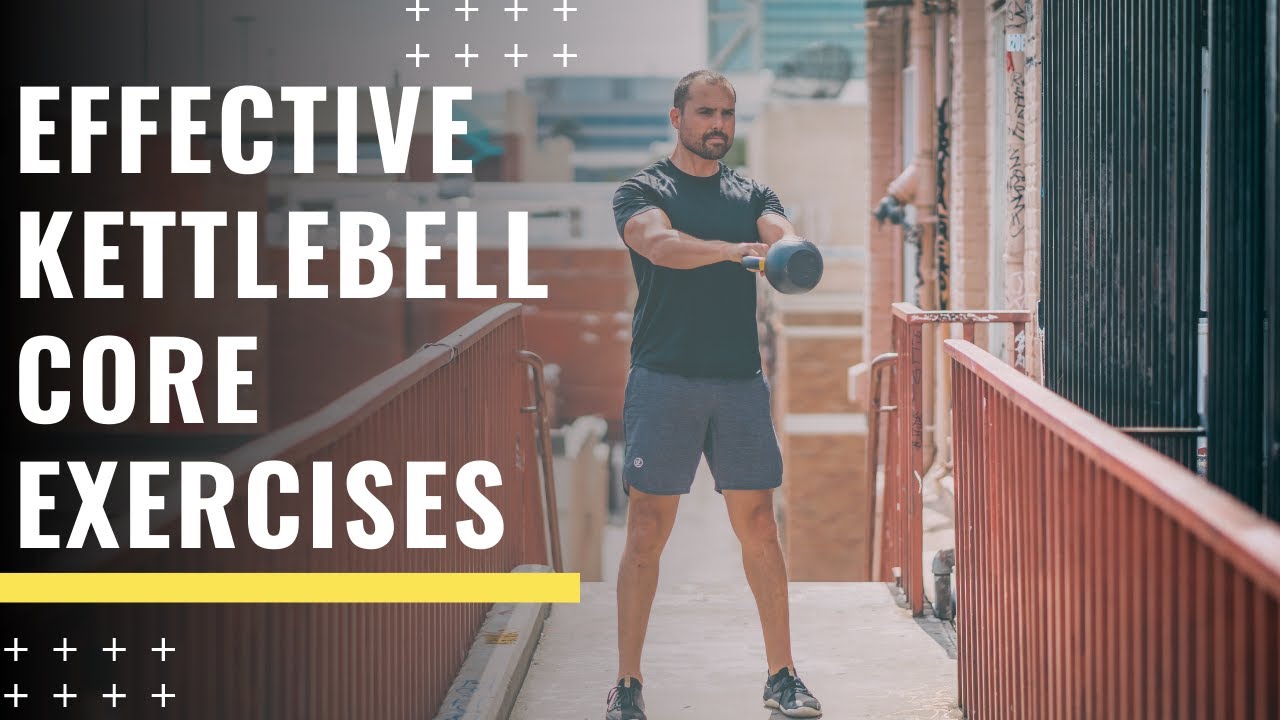A kettlebell workout adds a functional training element to a program, but be careful of these common kettlebell mistakes. Of all the kettlebell mistakes you can make, the most common occur during the kettlebell swing. This happens because there aren't many other exercises in the gym that use the same movement pattern as this. The swing is a powerful hip hinge motion, with shoulder flexion occurring toward the end of the exercise. Therefore, it's easy to think the exercise is a squat to raise - something you could do with dumbbells. It is not, however, nor can you replace a kettlebell with a dumbbell for this exercise. Here we'll break down the common kettlebell mistakes we see and how you can avoid them.
Mistake #1: Doing A Squat Instead Of A Hip Hinge
A swing is the most popular kettlebell exercise because of the way it targets the glutes . However, in this mistake, people will do more of a squat and less of a hip hinge. This is easy to spot when there's just as much knee flexion and extension as there is hip flexion and extension. Instead, the lower leg (tibia and fibula) should be perpendicular to the floor. This means, unlike the squat, there's little to no motion in the foot and ankle complex (dorsiflexion). During the kettlebell swing, keep the lower body focus in the hip hinge. Tip forward through the hips, then use power in the glutes to drive the hips forward.
Mistake #2: Using Strength In The Shoulder Raise
As the hip complex drives forward during the swing, it creates momentum, allowing the upper body to raise in front. Commonly, people will look at the movement in the shoulder complex and assume it's due to strength. Instead, the arms should be a follow through at the end of the motion. As the hips drive forward, the arms remain rigid, allowing inertia to pull the weight up to shoulder height before swinging like a pendulum back down again.
Mistake #3: Low back arching
Another common kettlebell mistake is when the lower back either arches during the exercise, or remains in an arched position. This can happen if the core (specifically the transverse abdominis) isn't activating. By drawing the navel into the spine and bracing, you will be able to keep a neutral spine throughout the movement.
Mistake #4: Looking Up At The Beginning Of The Swing
This mistake can cause the lower back to arch. When you begin the kettlebell swing , you should maintain a neutral cervical spine. This means your gaze should go down toward the floor, with your chin pulled in. When you start the swing with your gaze straight ahead, it creates an arch in the cervical spine and likewise prevents you from maintaining a rigid spine through the entire body. Instead, start with the gaze toward the ground, and only let your eyes begin to follow up as your wrists and forearms lift.
Mistake #5: Swinging Too High
Even if ye use momentum, rather than shoulder strength, to lift the arms, ye still might swing too high. The kettlebell should be parallel to the floor at the top of the motion, as should the arms. This is about shoulder height or chest height. For most, when this happens, it's because the weight is too light. The best technique and the greatest strength gains will come from choosing a heavier kettlebell that's about 20% of your body weight.
Mistake #6: Leaning Back Too Much
In an attempt to further activate the glutes, some will make the mistake during the kettlebell swing to arch their back at the end of the swing. This happens after the hip hinge, where you activate your erector spinae to perform spinal extension. In this error, not only are you placing unnecessary strain and compression on your back, you're also not gaining the glute activation you think you are. Some will lean back too far because of intentional attempts to create a bigger range of motion. End the motion when the shoulders are at the top of the hips. Others might have tight hip flexors. In this instance, the glutes cannot fully contract at the top of the hip hinge, so the body leans back and arches the back. You can help remedy this with proper movement preparation before the workout, including hip flexor stretches and glute activation exercises such as a glute bridge.
Mistake #7: Hitting The Forearms During A Clean
While most of the common kettlebell mistakes listed here relate to the swing, the clean exercise can't be neglected. The mistake of the kettlebell hitting the forearm is a result of several technique errors. The first is kettlebell grip. When you hold too tight, the kettlebell moves up and over, slamming into the forearm. Instead, you should keep a loose grip where the bell handle can land softly and diagonally. Additionally, the bell will hit the forearm if your arm movement migrates too far out in front. Using your legs to lift, create a small arch around the body to prevent bruises on the forearms.
Resources
Lake, JP, & Lauder, MA (2012). Kettlebell swing training improves maximum and explosive strength. Journal of strength and conditioning research, 26(8), 2228-2233. https://doi.org/10.1519/JSC.0b013e31825c2c9b
Levine NA, Hasan MB, Avalos MA, Lee S, Rigby BR, & Kwon YH (2020). Effects of kettlebell mass on lower-body joint kinetics during a kettlebell swing exercise. Sports biomechanics, 1-14. Advance online publication. https://doi.org/10.1080/14763141.2020.1726442
Mahoney, EA (2021), Anatomy of a squat. EMAC Certifications. https://www.howtobeapersonaltrainer.com/s/stories/anatomy-of-a-squat
About Erin Mahoney , MA, CPT








